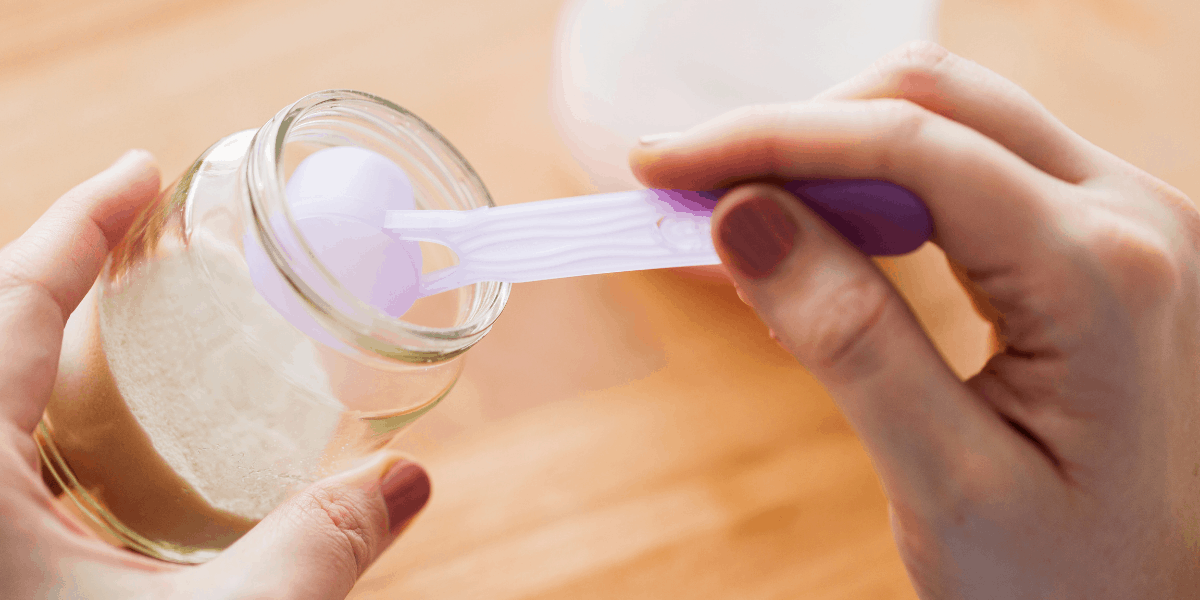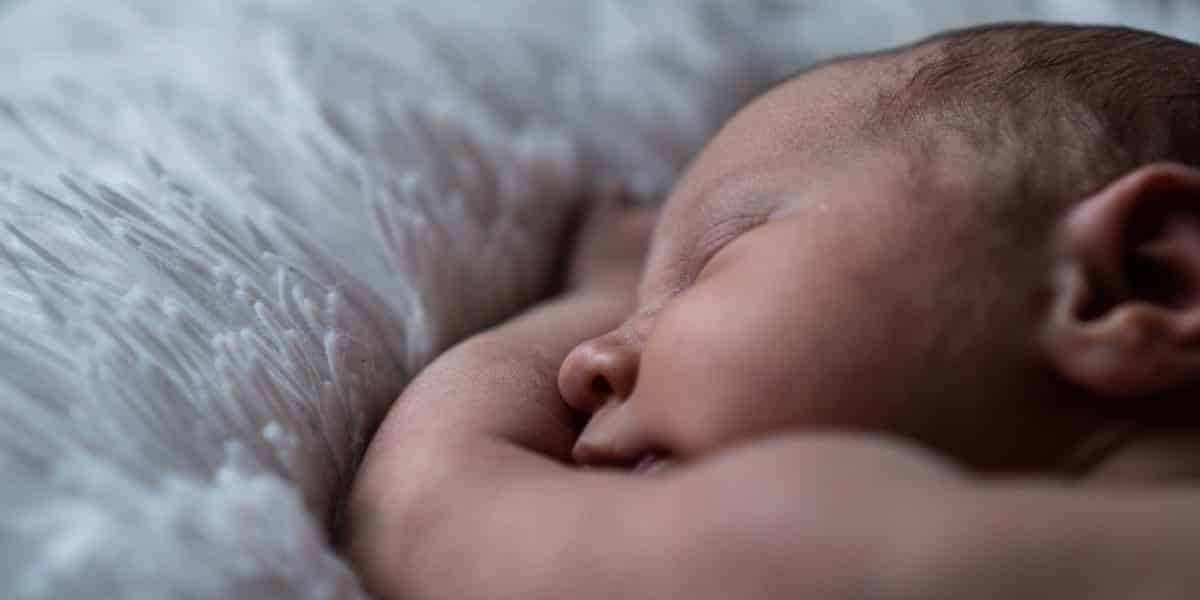Parenting is such a busy life. You’ve just made up your formula, your baby is crying, but now someone has come to the door. The dog is going crazy, and before you know it, that bottle of formula you had just heated up has now gone cold.
In this article, we won’t just answer the question if you can reheat old formula, we will also answer other questions around formula, such as, when is it safe to reheat old formula, and do you actually need to.
Your babies immune system is not as strong as yours yet. Always bear that in mind when preparing formula or thinking about reheating formula.
Bugs and bacteria can grow inside the bottle, or on the teat, which can cause stomach upset for your baby. This is one of the main reasons why reheating old formula certainly is not advised.
As an Amazon Associate I earn from qualifying purchases. The links below may be affiliate links. Please read my disclosure policy for more information.
How to make formula
- Fill your kettle and boil the water.
- Leave the water to cool for no longer than 30 minutes.
- Clean the surface you are going to use and wash your hands.
- If you are using a cold water sterilizer, rinse the bottle with the cooled water from the kettle.
- Stand the bottle on the clean surface, and follow the manufacturers instructions for how many scoops and water to use. Each manufacturer is slightly different.
- Screw the ring with the teat on to the top of the bottle.
- Put the cap on and shake until dissolved.
- Check the temperature of the water. Make sure it is not to hot by dabbing some on the inside of your wrist. It shouldn’t feel hot or cold.
- If there is any formula left in the bottle that hasn’t been drank, discard it.
A way in which you can help to reduce the chances of your baby getting diarrhea and vomiting, from bacteria within your feeding equipment, is to sterilize your bottles and teats first.
You can sterilize your bottles, after cleaning them first in one of three ways.
You can either use sterilizing solution, a steam method, or a boiling method. Follow your manufacturers guidance on which method would be best for your equipment.

How to clean a bottle
- Clean in hot, soapy water as soon as you have finished a feed.
- You can get bottle brushes to use to clean your bottles with, and teat bottles. Only use your cleaning brushes for cleaning feeding equipment and nothing else. Do not use salt to clean your bottles with as this can be harmful for your baby.
- You are able to use a dishwasher to clean your feeding equipment, ensure they are inserted in to the dishwasher face down. This will clean the equipment but not sterilize it. Always follow your equipment’s manufacturer guidelines in regards to using a dishwasher.
- Now rinse your equipment in cold water.
How to Burp a Baby That is Hard to Burp
How to sterilize a bottle
Below are three ways you can sterilize baby bottles.
Cold water sterilizing technique
- Leave your feeding equipment in the sterilising solution for 30 minutes.
- Change the solution every 24 hours.
- Ensure no air bubbles are in the bottle or teat when putting them in the sterilising solution.
- The sterilising should be equipped with a plunger or another tool to keep the floating bottoms under water.
Steam sterilizing technique
- Ensure your feeding equipment is facing downwards in the sterilizer.
- The manufacturers guidelines will tell you how long you can leave your equipment in the sterilizer for.
- This can be done in an electric sterilizer or microwave.
Boiling sterilizing technique
- Ensure your items are safe to be boiled before boiling them.
- Use a large pan to boil the bottle in water for ten minutes. Make sure the bottle stays under water and set a timer.
- Teats are known to become damaged more quickly using this method, and sometimes, bottles become cracked. Cracks and damage can also lead to a build up of bacteria. Ensure that none of your equipment is damaged before using it again.

After you have sterilized
- Leave bottles and teats in a steriliser until you need them.
- Wash your hands before handling any feeding equipment.
- Place your bottles on a clean surface.
It is advised, that once you have made up formula, and it is at room temperature, you have 2 hours in which to use it in. It is also advised that if there is any formula left over in the bottle, it is discarded. This is because of your baby’s saliva, bacteria from their bottle, is then encouraged to grow by saving it. Which you could then introduce to your baby, so it is best practice to discard it. You can keep made up bottle of formula in the fridge for 24 hours.
Which brings us on nicely to should you reheat the formula you have put in the fridge? The simple answer is no. The reason for this is because by reheating, you are encouraging bacteria to grow inside the bottle and on the teat. Only store in the fridge what you will need for the day. Never reheat formula in the microwave, as it may heat the liquid unevenly and burn your babies mouth.
It is simply not safe to reheat formula under any circumstances, due to the risk of making your child unwell. Formula simply isn’t designed to be reheated. The milk should always be at room temperature, and you can test this yourself. If you are unsure, dab some of the milk on the inside of your wrist. It shouldn’t feel hot or cold. That way, you know it is at room temperature.
Another reason to not reheat formula is, that by reheating, nutrients in the formula can be lost. The nutrients in the formula are intact only after heating it the initial time. This could result in your child not getting enough nutrients to thrive if it is reheated.
Although it can be tempting to reheat formula to coincide with your day, or as not to waste any money, there are ways you can produce less formula waste and not get through it so fast.
By paying attention to your baby’s feeding habits, can help you gauge how much formula to make up, and when. Also, by making sure to have a de-cluttered and tidy kitchen, will help you to speed up the process. When making your formula, always use the instructions provided by the manufacturer.
What to do if your baby drinks old formula
Recommended Sterilizers
Can I keep formula that has been heated in the fridge?
Best practice is to throw any left over formula that has been made away. You can keep liquid formula in the fridge as it is already is a sterilised bottle.
How many times can you reheat formula?
You can only heat formula once upon the initial time of making it. You can’t heat formula again, or heat left over formula. This is because the milk will spoil and bacteria can grown.
My baby didn’t finish the bottle of formula, can I reuse it?
No you can not reuse it. Any left over formula should always be discarded.
How long does a bottle of formula last at room temperature?
You can keep baby formula for 2 hours after you have made it. If it is liquid formula, you can only keep for 1 hour. If you feed your baby formula that has gone over this time frame, you risk making them unwell. Always discard any unused formula.

How long does powder formula last once opened?
One opened, powdered formula can last up to 4 weeks. Always check the packaging for expiry dates.
Simple Steps to Keep a Pacifier in Baby’s Mouth
What happens if a baby drinks spoiled formula?
Foodbourne and other bacteria’s can grow in bottles and teats that have spoiled milk in, or, milk that has been made up for multiple hours and not used. If bacteria is introduced in to your baby’s system, they can suffer with diarrhoea and vomiting. This can be serious in babies. Keep you baby as hydrated as possible using water. If you feel the diarrhoea and vomiting is not settling, seek medical help early. Or if you feel your baby is becoming dehydrated.
Can I reheat untouched formula?
No, you can not reheat formula under any circumstances as this will encourage bacteria to grow and spread. If you are finding you are wasting lots of formula, make note of your baby’s feeding habits to try and avoid making more formula than you need, or you have it ready for when your baby usually wants it.
Can I use a microwave to heat formula?
Microwaves are not advised to reheat formula. This is because microwaves may heat the liquid unevenly and you could inadvertently burn your baby’s mouth.
Is liquid formula better than powdered?
There is no difference in nutritional value between the 2 types of formula. However, powdered formula is cheaper than liquid. Liquid is better for convenience but is more expensive. It also can not be kept for quite as long as powdered.








